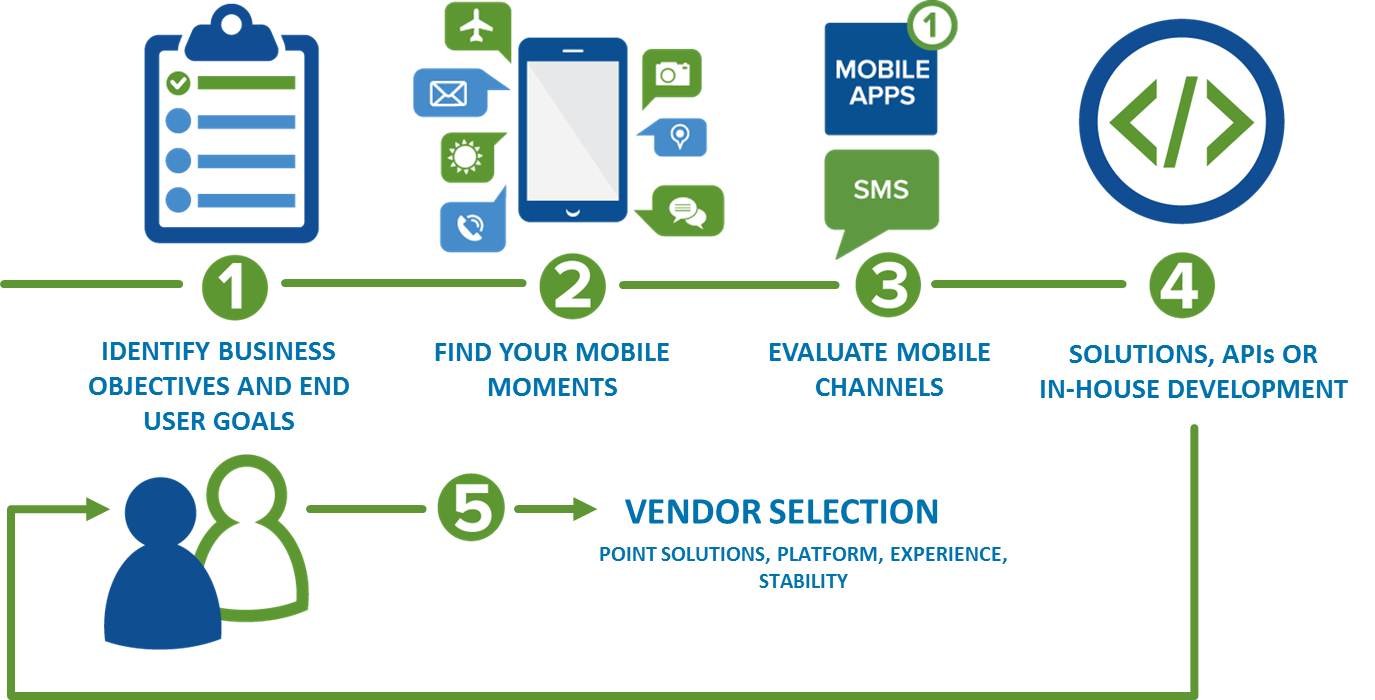OpenMarket – December 23, 2014
Many books have been written about enterprise mobile strategies – how to get started, what to include, why mobile is important, etc. One of the better ones is The Mobile Mind Shift, by Forrester Research analysts Ted Schadler, Julie Ask and Josh Bernoff. I clearly won’t be able to go into the same level of detail in a blog post, but I have identified five simple steps for developing a mobile strategy (see figure below) – based on many years of experience working with enterprises.
Figure: Five Simple Steps for Developing a Mobile Strategy
Step 1: Identify business objectives and end user goals
The first thing you need to do is identify your business objectives and end user goals. What business outcome(s) are you trying to achieve – improve customer experience, increase loyalty, drive revenue, reduce cost? And don’t forget about the goals of the end user – they want to get something out of the interaction too.
Step 2: Find your mobile moments
Having the objective and end user goals in mind helps you in the next step of identifying Mobile Moments – or in other words – identifying the customer touch points or processes to enhance with mobile.
Step 3: Evaluate mobile channels
Then you need to consider which communication channel you should leverage – SMS, mobile app, email? Consider the task, the audience and reach you’re looking for, as well as time-to-market (TTM) and cost. For example, if you want to provide a rich, holistic banking experience you’d probably look to a mobile app. However, if you want to be able to send fraud alerts to all of your customers then you’d opt for text messaging, since many (or most) of your customers don’t use your mobile app.
Step 4: Deciding on the type of solution
You need to decide on your implementation approach – in-house development, an off-the-shelf solution, somewhere in-between with APIs? Consider your company’s focus – what’s your budget and resourcing, how much technology you want to ‘own’ and how best to allocate your resources.
Step 5: Selecting a vendor
Lastly, if you opt for a partner solution – you’ll need to look for partners who can serve your immediate needs as well as enable you to scale and grow engagement services across your business. Do they offer a point solution for a single use case (need), or a platform to handle requirements across the entire organization? You’d also want to consider company characteristics such as mobile experience, financial stability and corporate maturity – especially if looking for a long-term, strategic partner.
Key Takeaway
The most important thing you can get out of this post is that you should actually develop a mobile strategy up front before launching a mobile initiative, even if just a very high-level blue-print. Answer the five questions (steps) above and you’ll improve your chances for a successful outcome.



